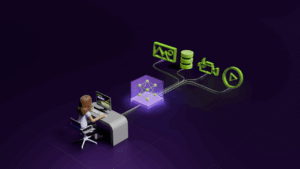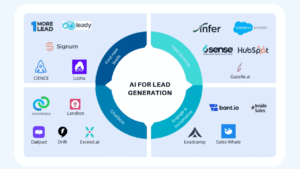A new benchmark in enterprise AI: SAP publishes anonymized, production-grade ERP data to close the gap between AI research and real-world business use cases.
For years, generative AI has revolutionized text processing—drafting emails, answering questions, even generating legal documents. But when it comes to enterprise-grade structured data, particularly the kind that powers ERP systems, AI progress has lagged. The root cause? A chronic lack of access to high-quality, linked tabular data from actual business systems.
SAP’s recent release of the SALT dataset (Sales Autocompletion Linked Business Tables) directly addresses this challenge. Built using anonymized customer ERP data, SALT is the first of its kind: a curated, real-world dataset representing the interconnected, heterogeneous, and hierarchical nature of modern enterprise business records.
This is not just a data drop—it’s a signal that SAP is actively shaping the future of enterprise AI, inviting collaboration with academia, and laying the foundation for foundational models purpose-built for B2B systems.
Why Structured ERP Data Remains the Last Mile for AI?
While large language models have surged ahead on public web text, enterprise AI systems still grapple with:
-
Sparse access to realistic tabular data
-
Privacy and confidentiality limitations
-
Complex, multi-table relationships that don’t translate easily into natural language
In practice, ERP systems contain deeply interconnected information—think customer IDs linked across sales orders, shipping addresses, billing data, and inventory. This makes AI model training far more complicated than feeding in standalone text files or CSVs. What’s needed is data that reflects the relational integrity and contextual depth of real business transactions.
Introducing SALT: A Bridge Between Research and Real-World Enterprise Systems
SAP’s SALT dataset offers exactly that. It’s built from a production ERP system used by a customer and includes minimally processed data that captures how businesses interact with sales orders in the real world. This includes:
-
Multiple linked tables reflecting actual enterprise workflows
-
Heterogeneous data types (text, numerical, categorical)
-
Column imbalances typical of real enterprise datasets (e.g., dominant product categories)
For AI researchers and enterprise data scientists, SALT offers an opportunity to test, benchmark, and pre-train models on data that mirrors true operational complexity.
“There is a gap between academia and industry in terms of data. It cannot be closed easily because of privacy,” says Tassilo Klein, SAP researcher. “But we want to enable the research community to work on real problems, not just simulated ones.”
Strategic Use Cases for Enterprise AI
By releasing SALT, SAP is laying the groundwork for a new era of intelligent enterprise automation. Key implications include:
-
Pre-training of table-native AI models that can generalize across ERP modules
-
Benchmarking model performance on realistic business datasets
-
Validating generative AI workflows for structured document completion, forecasting, and anomaly detection
SALT also complements SAP’s internal R&D on the SAP Foundation Model, which is being trained specifically to understand enterprise tabular data, rather than repurposing text-based LLMs.
A Look at the Architecture: From Tables to Knowledge Graphs
To scale these capabilities, SAP is integrating knowledge graph technology. By mapping metadata across entities (the who, what, and when), knowledge graphs convert ERP data into a format that AI models can interpret natively. The goal is to:
-
Reduce model training requirements
-
Maintain context across interrelated tables
-
Enhance explainability of outputs for business users
This approach is embedded in PORTAL, a research paper released in parallel with SALT. It outlines how SAP is shaping a foundational architecture where graph-enabled, tabular-native models drive predictive insights with minimal supervision.
What This Means for Enterprise Tech Leaders?
For CIOs, AI/ML leads, and enterprise architects, SALT isn’t just a dataset—it’s a signal that the AI-native enterprise stack is maturing. It answers a long-standing gap:
-
No more guesswork from simulated data
-
No more one-size-fits-all LLMs for structured business data
-
A path forward to robust benchmarking, fine-tuning, and model validation
This release also opens doors for enterprise AI teams to experiment with real ERP-style data without compromising on privacy or compliance—something that’s been historically difficult to achieve.
As SAP expands the SALT initiative to include more customers, modules, and industries, the enterprise AI community will finally gain the tooling needed to deliver on the promise of intelligent, automated, and context-aware systems.
Turning Business Data into a Foundation for Enterprise-Grade AI
By publishing SALT, SAP is providing the research and enterprise AI communities with something they’ve long lacked a real, complex, and legally usable ERP dataset. For businesses, it means that AI tools trained on SALT-like datasets could soon automate quote-to-cash flows, supply chain decisions, or financial audits with far greater precision.
It also underscores SAP’s commitment to building purpose-built AI infrastructure, tailored not for consumers or generic NLP use cases, but for mission-critical enterprise environments.
For any enterprise evaluating the next evolution of AI in operations, SALT is a clear step toward more accurate models, more effective automation, and more trustworthy enterprise intelligence.









